AI Transforms Iconic Images: A New Perspective on Photography
Written on
Chapter 1: A Year of Reflection
It has been more than a year since I first encountered a captivating magazine at my local grocery store's checkout aisle. I have always been drawn to those glossy publications, especially those showcasing legendary figures like The Beatles or Marilyn Monroe, or themed issues such as The Year in Review and The Future of Medicine.
One particular magazine titled "The World’s Most Iconic Photography" by Popular Photography Magazine caught my eye, featuring an astronaut on the cover. Instantly, I wondered: could an AI replicate that iconic image?
I decided to purchase the magazine, which looked something like this:
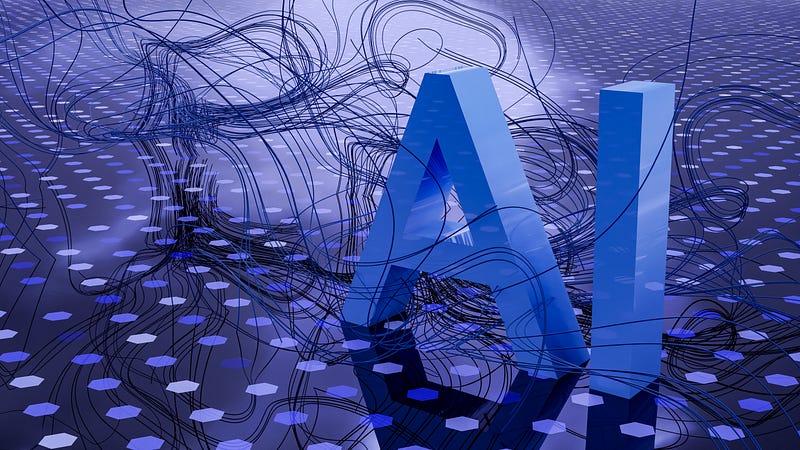
The magazine sat atop my desk, gathering dust for the next twelve months. Although its pages began to curve, the spine remained unbroken, and I found myself contemplating its contents often.
Finally, after a year, I sat down to challenge AI with recreating some of the iconic photographs, particularly those featuring pop culture legends. My first attempt was an image of Marilyn Monroe from "The Seven Year Itch," where her dress famously billows due to air from a subway grate.
Despite numerous attempts, AI struggled to capture Monroe's likeness accurately, especially upon zooming in. Additionally, I encountered several error messages until I omitted the term “sex” from the phrase “sex symbol.” Strangely enough, the subway grate seemed to vanish entirely.
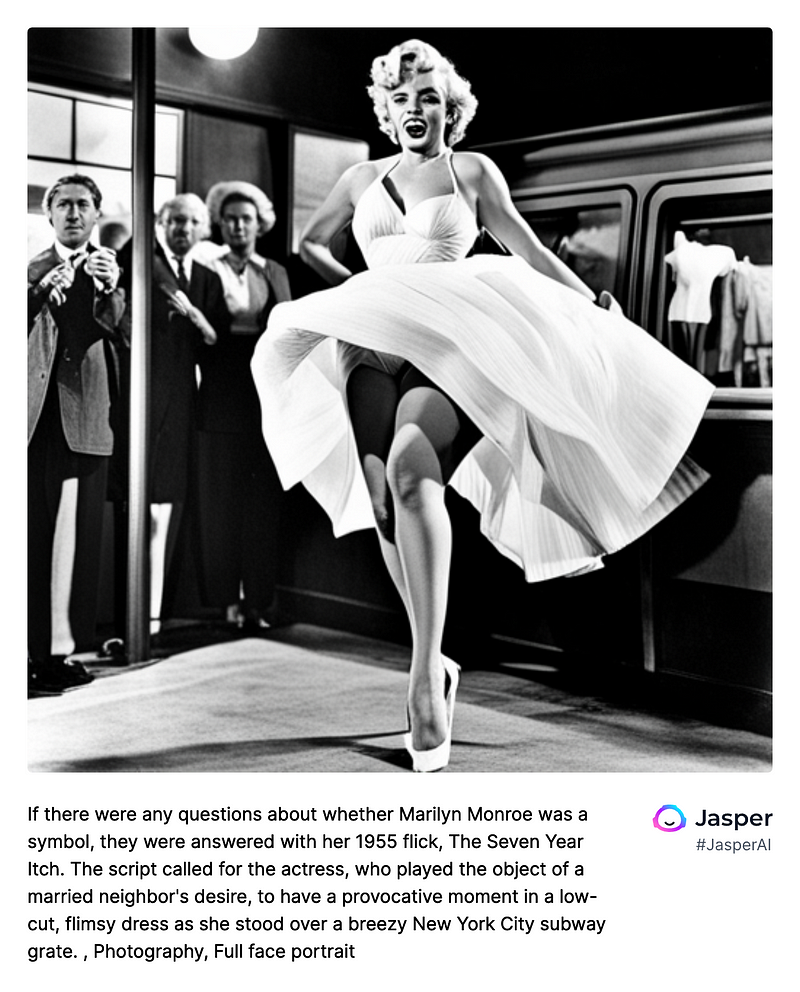
Moving forward to Bigfoot, a creature I typically write as one word, but the magazine preferred two. The results were not as photorealistic as I had hoped, yet I managed to generate a fairly decent depiction of Bigfoot ambling through the forest.

Despite numerous attempts to recreate the opening day of Disneyland in 1955, I faced disappointment. Much like the struggles with Monroe's image, something felt off. Ultimately, I settled on the best of the unsatisfactory results.
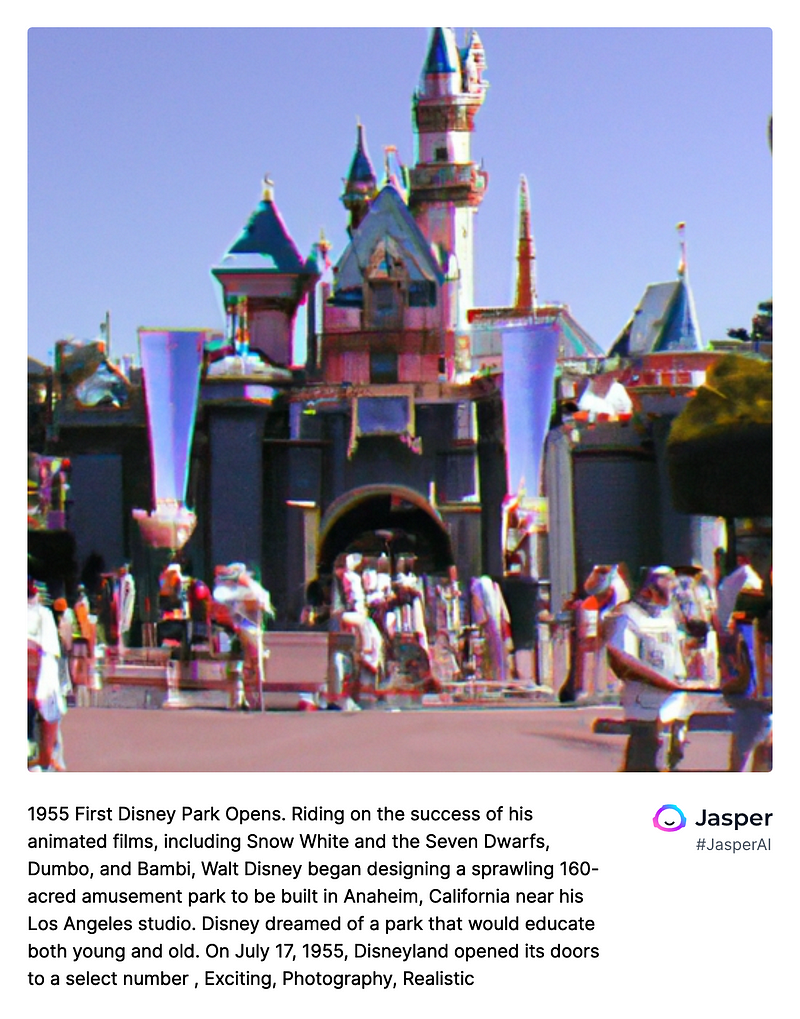
As I moved to the fourth image in the series, depicting “1961: Louis Armstrong plays at the pyramids,” I realized I was limiting myself by using the magazine's descriptions verbatim. I began to selectively choose details from the descriptions instead, hoping for better outcomes. Spoiler alert: it didn't improve much.

Next, I tried to recreate a famous photo of the Rat Pack. Without ample context, the AI failed to capture the essence of the original image. However, it did produce some intriguing vintage-style pictures. The challenge remained: could I identify Frank Sinatra, Dean Martin, or Sammy Davis, Jr. among them?

No matter how many suggestions I provided regarding the artists involved in the 1985 anthem “We Are the World,” the AI's result left much to be desired. I appreciated its attempt to convey the camaraderie through shared microphones, though.
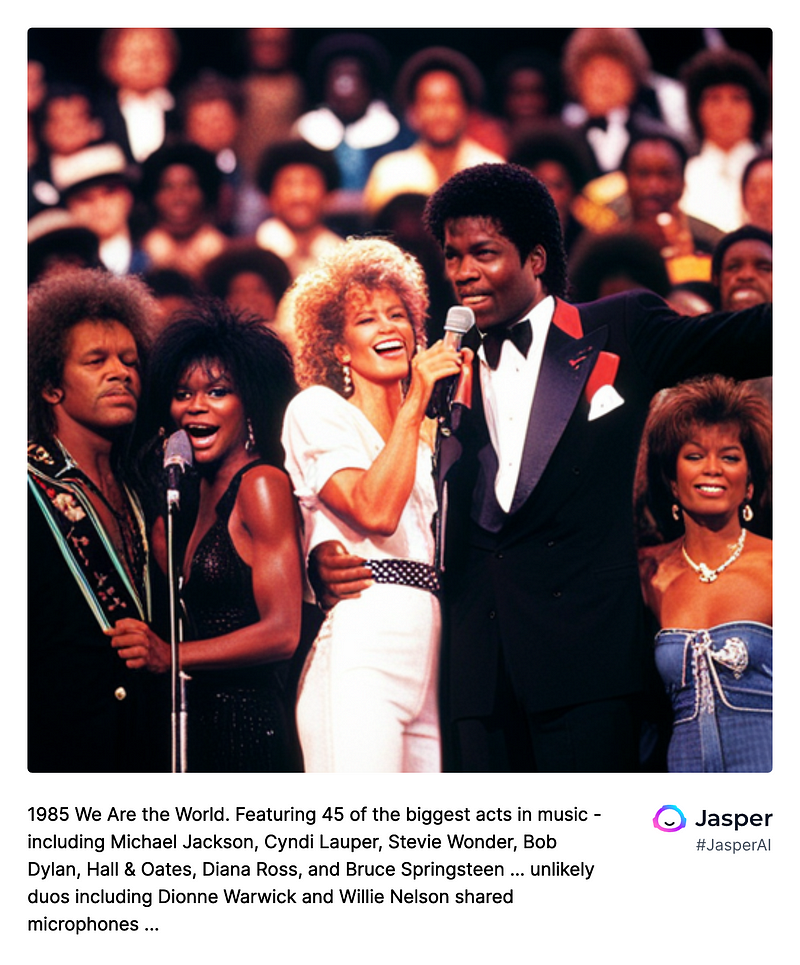
Shifting focus to Madonna and her iconic cone bra designed by Jean-Paul Gaultier, I discovered I needed to remove both “sexually” and “provocative” from my prompt. The result? A striking image that, while not accurate, was undeniably beautiful.
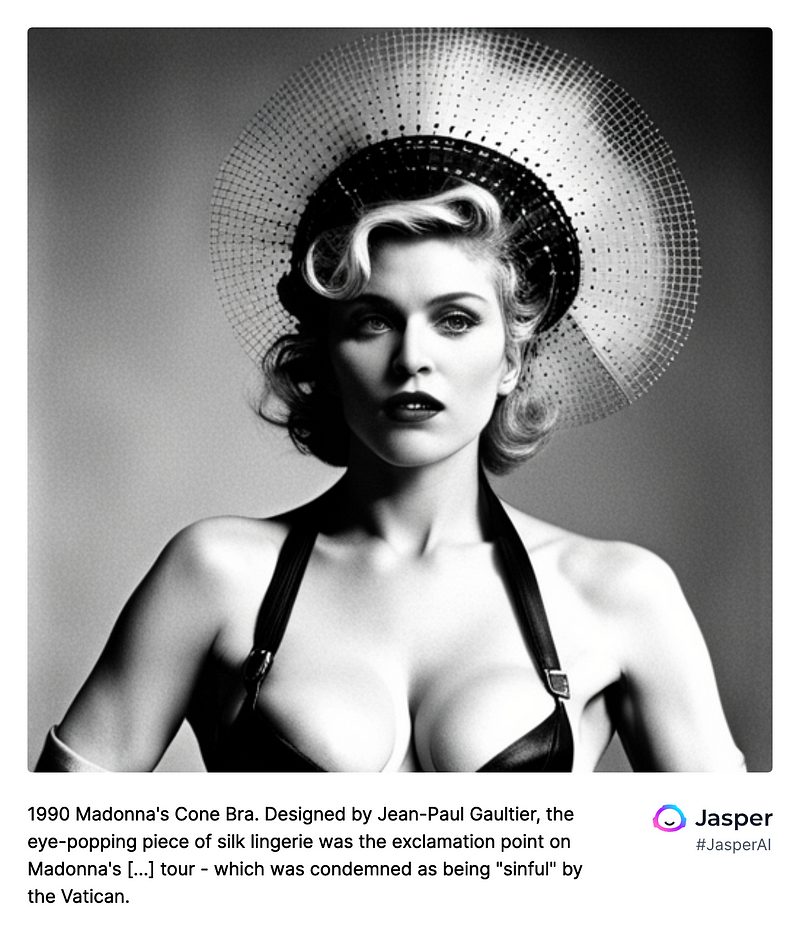
Next, I attempted to recreate the infamous slow-speed chase involving O.J. Simpson. However, the result was amusingly far from realistic. Did that Bronco look more like something out of Ghostbusters than a real Ford?
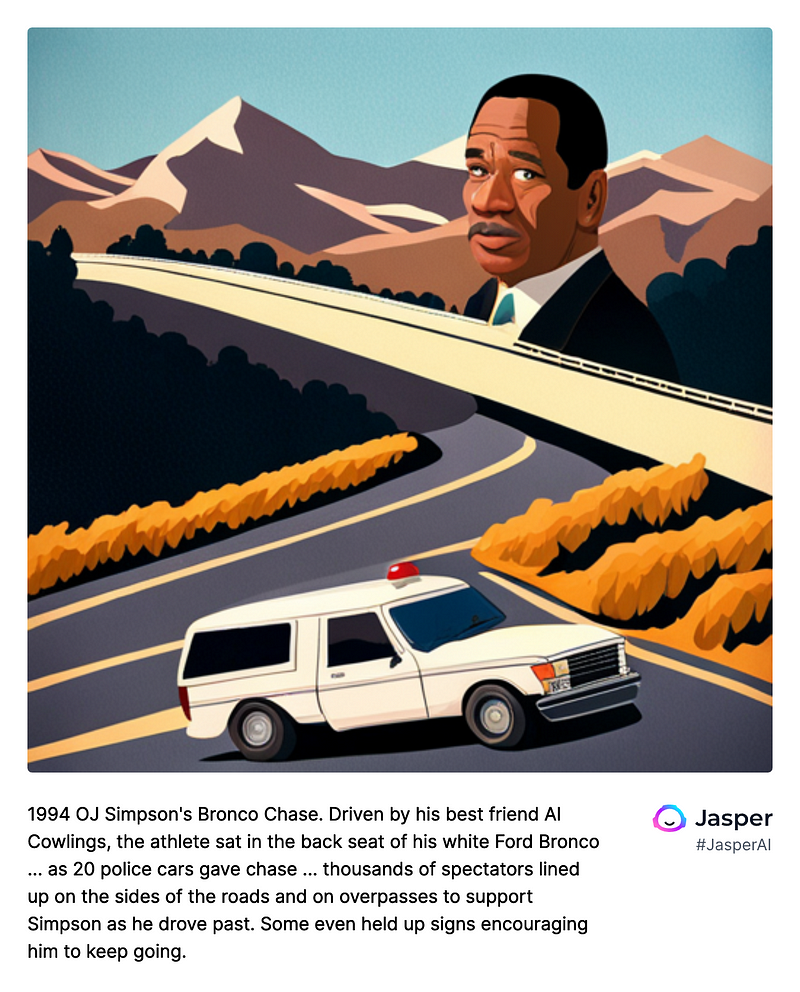
The AI's rendering of the widely shared selfie from the 2014 Oscars, led by Ellen Degeneres, was surprisingly recognizable. While Ellen and Bradley Cooper looked familiar, the transformation of Martha Stewart into a young man reminiscent of Lance Bass was quite amusing.
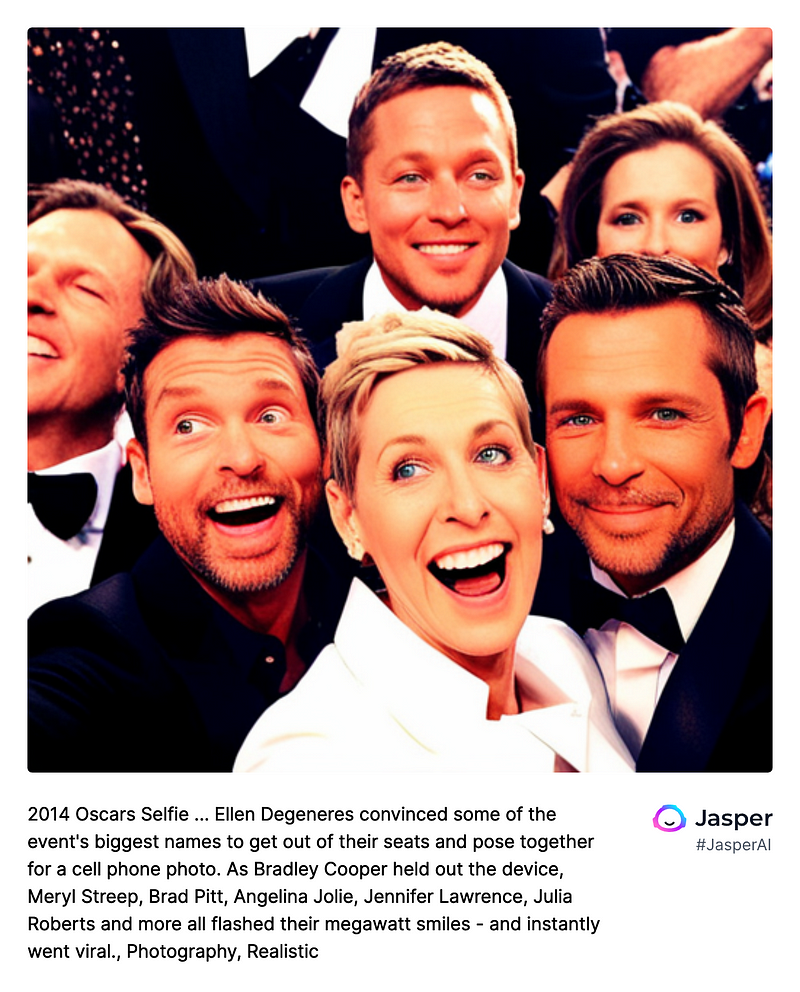
As I concluded the series, I attempted to capture the moment when Brad Pitt and Jennifer Aniston shared a brief hug, years after their divorce. Despite my best efforts, the AI insisted on placing them on the red carpet, and a genuine backstage embrace remained elusive.

And just for good measure, here’s one last image:
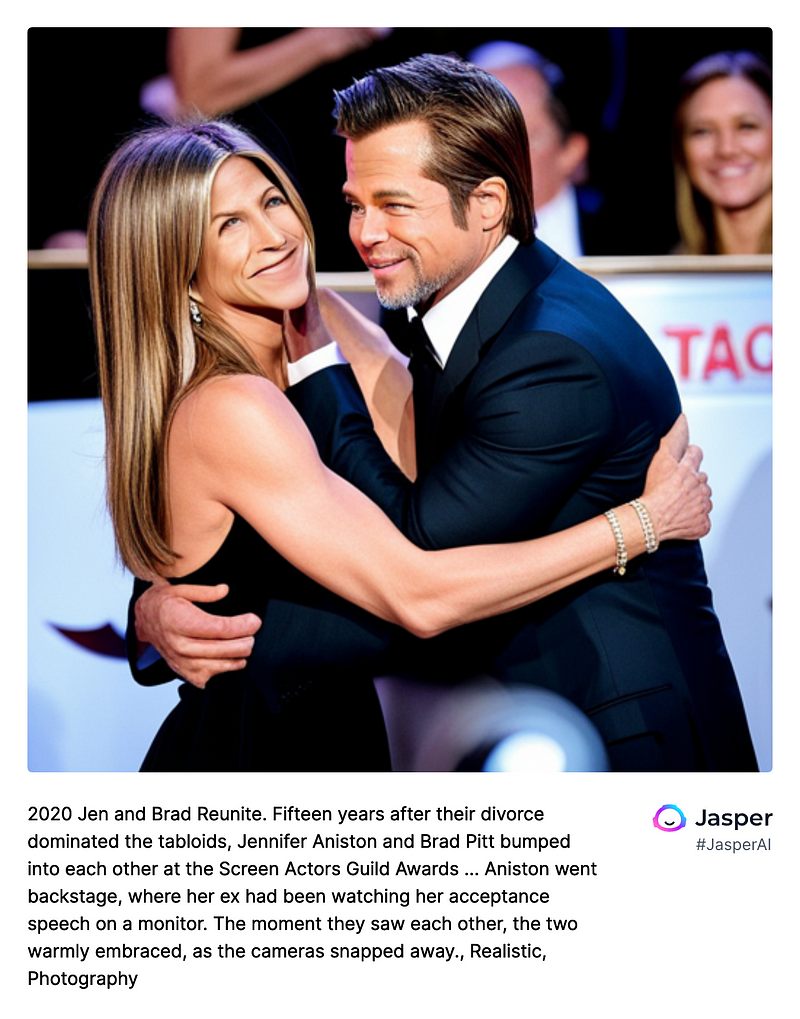
If you’re interested in seeing more recreations, please leave a comment, and I would be delighted to continue this exploration. Thank you!
Chapter 2: The Reality of AI in Photography
The video titled "People thinking AI Photos are real" explores the blurred lines between AI-generated images and reality, emphasizing the impact of technology on our perception of photography.